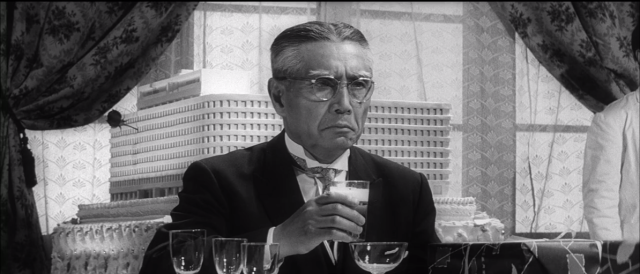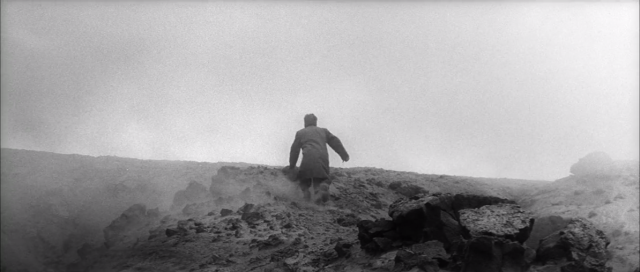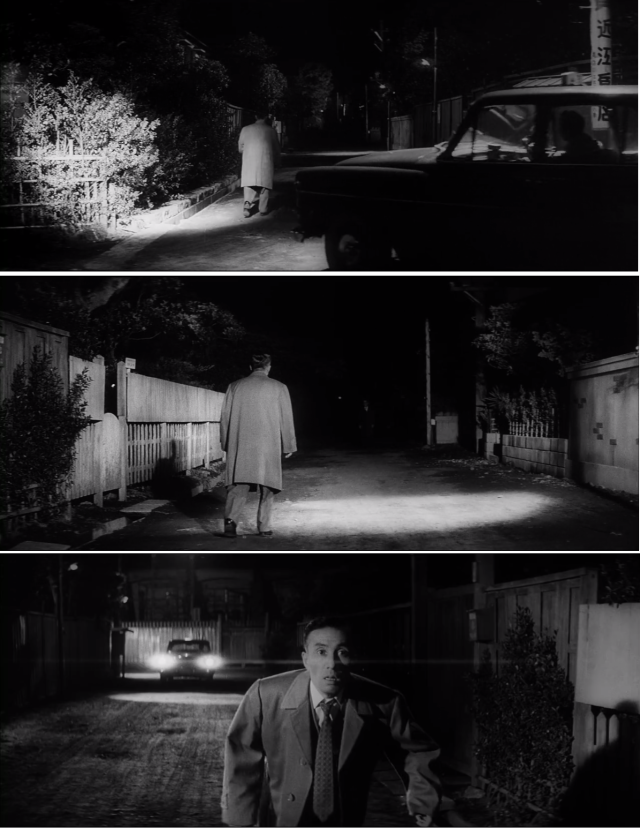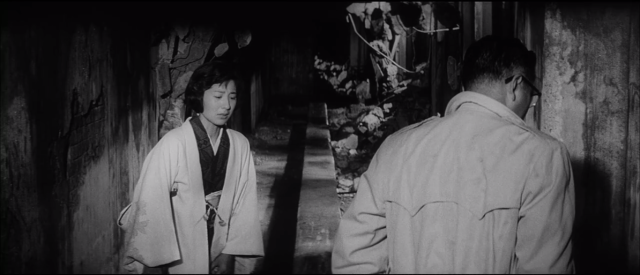
The Groom’s cake has an unusual theme.
I have been gradually making my way through the filmography of the great Akira Kurosawa. Thanks to some bargain eBay purchases, the public library, and a three month subscription to Hulu, I should be able to access just about every one of his films except, I think, Dersu Uzala. I recently watched his adaptation of Gorky’s play The Lower Depths. That was the first time seeing a Kurosawa film that I didn’t take much away from it. It contains a lot of scenes of miserable folks wallowing in a squalid tenement, with the only real plot elements coming from a love triangle (or maybe a love rectangle) between a thief, the landlord, the landlord’s wife, and her sister. To me, it was a great example of the difficulty even a master filmmaker like Kurosawa can have in translating a stage work into a successful film. Dramatic forms that seem so similar (plays and narrative films) are really far apart it seems in their means of artistic expression.
Kurosawa’s filmography is full of adaptations, both from plays and literary sources. Most famously, of course, are two loose adaptations from Shakespeare, Throne of Blood (which hews pretty closely to Macbeth), and Ran (which retains the essential characters and situation of King Lear). When I came to The Bad Sleep Well, I’ll confess that I didn’t even recognize it as another adaptation from the bard, but after the fact it seems obvious. Kurosawa transported the story of the wronged son seeking revenge for his father’s murder into the cutthroat world of contemporary Japanese business.

A bleak moment: Wada’s near suicide, reminiscent of imagery in the much later Akira Kurosawa’s Dreams (1990)
The plot and character elements from Hamlet are remixed with such care and subtlety, that the references seem to be wholly original to the story at hand. Such is the power of Shakespeare, of course, that his timeless works admit of such varied reinterpretations without strain. Though the source material is of course no guarantee of success, Kurosawa achieved a brilliant transplantation of the essentials. For more on the Shakespearean elements in the film, I recommend this essay by Michael Almereyda.

A light in the shadows reveals…a ghost?
In Throne of Blood, Kurosawa opted to retain from Macbeth the supernatural presence of a witch encountered in a haunted forest. This was befitting of the stylized, fable-like quality of the story, emerging from the fog of history and myth. But the realistic and contemporary narrative in The Bad Sleep Well would not permit a figure such as the Ghost of Old Hamlet. Kurosawa cannily evoked the same eerie mood with a noirish sequence set in an alley at night. The play of light and shadow from street lamps and car headlights created an evocative and scary setting for an encounter between one of the villains and a man whom he presumed to be dead. The villain thinks he is seeing a ghost, and so Kurosawa can have his ghost scene, subjectively, without leaving the confines of the naturalistic story he wished to tell.

Love in the Ruins: Not-Ophelia and Not-Hamlet sharing a tender moment.
The ways in which business destroy both family and society are explored through the settings chosen by Kurosawa. The climactic scenes of the film are set in the bombed out ruins of a wartime factory. An early scene finds a character heading to attempt suicide at the command of his business superiors. He sumbles through what a sign tells us is a “Development Zone.” As he ascends to look over a gaping pit from which arises steam and dust from the pit, it seems rather that he has approached the entrance to Hell. Very little takes place in day time. Most of the action occurs in shadows of nighttime alleyways or in a critical scene, breaking into a dimly lit office. Even the domestic scenes take place at night, conveying a pervasive sense of doom.
This is a lesser-known gem of a film. It doesn’t quite reach the peak that would be achieved with his later masterpiece, High and Low, but fans of that film should definitely seek this one out. It also features a great cast, many of which are Kurosawa regulars, including Toshiro Mifune, Takashi Shimura, Masuyaka Mori, and Kamatari Fujiwara to name a few. A familiarity with Hamlet will help you to appreciate the genius of the adaptation, and also the critical ways in which Kurosawa diverges from that tragedy, particularly in the tragic ending of this film. But this is a thrilling story in its own right, told with the restrained, yet precisely expressive visual control that makes High and Low so tautly compelling. With a title like The Bad Sleep Well, you should know not to expect a happy resolution, and Kurosawa delivers on that promise. Like the family revenge dynamic in the tale of Hamlet, the theme of corruption and violence at the intersection of money and power is a timeless one, delivered here in an ominous film that continues to resonate across the gap of decades and cultures.
This post is part of the Blind Spot Series, hosted by The Matinee blog.


I saw Throne of Blood on Hulu once, and their equivalent of Lady Macbeth was spine-chilling, I really hope to have my own copies of Kurosawa’s works some day 🙂
LikeLiked by 1 person
THRONE OF BLOOD is amazing, and really unique in Kurosawa’s output for the highly stylized acting. If you haven’t tried any of his modern day films, I recommend either IKIRU or HIGH AND LOW as starting points.
LikeLiked by 1 person
i will check them out 🙂
LikeLiked by 1 person
High and Low is one of my favorites. I actually saw it a few weeks before seeing Ron Howard’s Ransom. Its excellence made my experience of the Mel Gibson vehicle even less enjoyable.
LikeLiked by 1 person
I remember you telling me how much you like it a few years ago, before I had gotten to see it. Now it’s one of my favorites as well!
LikeLike